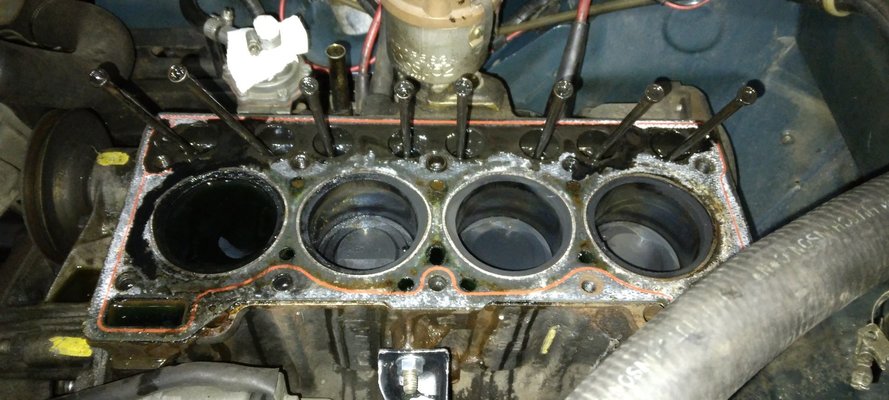jack23247
Enthusiast
- Messages
- 34
- Location
- Italy
Hello everyone,
I am trying to diagnose a rather worrying problem with my engine: after letting the car run for a while, bubbling can be seen in the coolant expansion tank/reservoir when accelerating. After shutting the car down, overnight, the whole contents of the reservoir disappear. I have confirmed that the water is going into the oil, as the oil cap shows the usual water/oil emulsion, and the level of the oil in the pan has definitely increased despite not adding any. There seems to be no oil in the coolant, though, or at least I could see no oily stuff floating in the radiator. The level of the coolant in the radiator does not change.
The engine's always had a tendency to eat some coolant but the bubbling has never been this noticeable until recently, and the level of the oil had never increased before. I have turned the car on probably once or twice since the problem appeared and, sure enough, it smoked terribly for a while. When it stopped smoking, though, it ran fine until parked. I have decided to avoid cranking the car until I can at least drain the oil and flush the sludge out of the engine, but I doubt that alone will solve my problem.
Some information about the history of the vehicle:
- The car had a new head gasket installed in 2017, and the head has been lapped. I've used the car as a daily driver for several years after the replacement of the head gasket with no major issues.
- The car has suffered a problem, as described here, due to a missing support strut: in several occasions, the engine has suffered violent vibrations for limited amounts of time. The bubbling has definitely started several hundred kilometers after the issue with the support strut first presented itself, and it has worsened after the support strut was reinstalled. I'm not sure there's a connection between the two issues but it might be an useful detail to mention.
Any help will be greatly appreciated!
I am trying to diagnose a rather worrying problem with my engine: after letting the car run for a while, bubbling can be seen in the coolant expansion tank/reservoir when accelerating. After shutting the car down, overnight, the whole contents of the reservoir disappear. I have confirmed that the water is going into the oil, as the oil cap shows the usual water/oil emulsion, and the level of the oil in the pan has definitely increased despite not adding any. There seems to be no oil in the coolant, though, or at least I could see no oily stuff floating in the radiator. The level of the coolant in the radiator does not change.
The engine's always had a tendency to eat some coolant but the bubbling has never been this noticeable until recently, and the level of the oil had never increased before. I have turned the car on probably once or twice since the problem appeared and, sure enough, it smoked terribly for a while. When it stopped smoking, though, it ran fine until parked. I have decided to avoid cranking the car until I can at least drain the oil and flush the sludge out of the engine, but I doubt that alone will solve my problem.
Some information about the history of the vehicle:
- The car had a new head gasket installed in 2017, and the head has been lapped. I've used the car as a daily driver for several years after the replacement of the head gasket with no major issues.
- The car has suffered a problem, as described here, due to a missing support strut: in several occasions, the engine has suffered violent vibrations for limited amounts of time. The bubbling has definitely started several hundred kilometers after the issue with the support strut first presented itself, and it has worsened after the support strut was reinstalled. I'm not sure there's a connection between the two issues but it might be an useful detail to mention.
Any help will be greatly appreciated!






